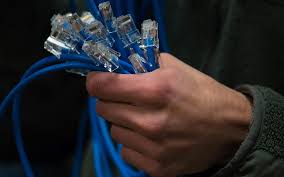
It is rare that Arizona Governor Katie Hobbs comes to Scottsdale, but it came paired with an even more unusual conversation in our city: the importance of broadband. But it’s an important conversation that was had here, as well as an irony worth acknowledging.
Scottsdale, with its gleaming tech campuses and fiber-optic infrastructure serving residents who take high-speed internet for granted, seems an odd setting for a conversation about digital connectivity gaps. Yet that’s precisely why it matters; these discussions need to happen where decision-makers are, in communities that have already reaped the benefits of robust broadband.
The reality is that while Scottsdale residents stream 4K content and work seamlessly from home offices, nearly a third of Arizona households, close to 800,000, remain underserved or completely unserved when it comes to reliable internet access. This isn’t just a rural inconvenience; it’s a fundamental barrier to economic participation, healthcare access, and educational opportunity in the 21st century.
Arizona’s ambitious broadband expansion, fueled by nearly $1 billion in federal BEAD funding, represents more than infrastructure investment. For communities across tribal lands, where Arizona’s 22 federally recognized nations face disproportionate digital divide challenges, reliable internet means telemedicine visits become possible, students can access online coursework, and economic development opportunities finally reach geographically isolated areas. For residents in places like Bullhead City, where daily internet interruptions made basic email communication frustrating, fiber optic connections transform daily life in ways that urban dwellers rarely consider.
The state’s strategic middle-mile network, with fiber optic conduit running along I-17, I-19, and I-40, demonstrates forward-thinking infrastructure planning. Arizona owns this network (a rarity among states), positioning it to serve an estimated 80% of unserved and underserved households. This backbone, developed through partnerships between ADOT, the Arizona Commerce Authority, and private sector entities, creates the foundation for last-mile connections that will reach individual homes and businesses across rural Arizona.
What makes this particularly significant is the timeline and scope. Within two to three years, this massive broadband push promises generational change for Arizonans regardless of geography. Children in remote areas will access the same educational resources as their suburban peers. Ranchers and tribal entrepreneurs will compete in digital marketplaces. Healthcare providers will reach patients hundreds of miles away through telehealth platforms.
For those of us comfortable in Scottsdale, Tempe, or Phoenix, broadband feels like a utility as basic as electricity or water—something we notice only when it fails. But that privilege blinds us to the economic and social isolation that lack of connectivity creates elsewhere in our state. When state leaders advocate for broadband expansion in communities that already have it, they’re forcing a necessary conversation about equity and opportunity that transcends zip codes.
Arizona’s broadband expansion isn’t just about technology deployment; it’s about ensuring every corner of our state can participate fully in the modern economy. The conversations happening in Scottsdale today will determine whether rural and tribal Arizona gets left behind or brought along into the digital future. That’s a subject that demands attention from everyone who cares about the state’s economic trajectory—even those of us who’ve never experienced what it’s like to wait ten minutes for an email to send.

